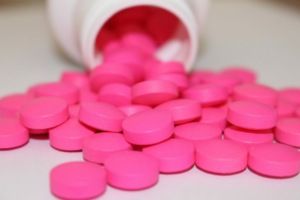News
Some painkillers up risk of heart disease by 50 percent, study warns
This article is more than 7 years old.
A number of common over-the-counter drugs are detrimental to those suffering from high blood pressure, high cholesterol or diabetes

The commonly-used painkiller Ibuprofen contains the chemical in the spotlight (photo: pixabay/Vnukko)
A new Danish study concludes that the drug diclofenac found in non-steroidal anti-inflammatory drugs (NSAIDs) increases the risk of cardiovascular disease by 20-30 percent.
However, Morten Schmidt, a doctor and researcher at Aarhus University Hospital and the head of the study, urged caution when it comes to drawing hasty conclusions, reports Videnskab.dk.
“It’s important to emphasise that the total risk for an individual patient to suffer from say a blood clot, is still low,” said Schmidt.
READ ALSO: Blood pressure medicine to be recalled
Despite that, he added that “we think it’s high time people are informed about the risks of using diclofenac and that usage is reduced.”
NSAIDs are analgesic, enzyme inhibitor pain-relieving drugs that are frequently used in high doses to treat arthritis.
Diclofenac is common in over-the-counter NSAIDs such as Ibuprofen, Voltaren and Naproxen. However, in Denmark they are only available on prescription.
A clear culprit
Previous studies had already suggested that NSAIDs increased the risk of heart disease but the new study, conducted at Aarhus University between 1996 and 2016, is the first one citing diclofenac as the critical factor.
A total of 6.3 million patients treated with diclofenac drugs were analysed, and results revealed that they suffered from a 50 percent greater chance of cardiovascular disease than those who were not treated with the drugs.
The study concluded that the number of diclofenac prescriptions should be decreased, recommending Paracetamol in its place.
Trapped in old ways
But things may not be so clear cut. Steinar Madsen from the Norwegian medicines agency Legemiddelverket points out that for some patients, there is no good alternative to the NSAIDs.
“Patients suffering from rheumatism, osteoarthritis in the hips or bones may still derive great benefits from the drugs,’’ he said. “We have to balance between the costs and benefits from the use of NSAIDs.”










































